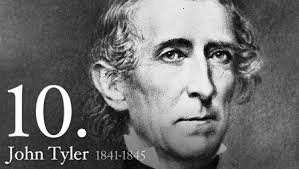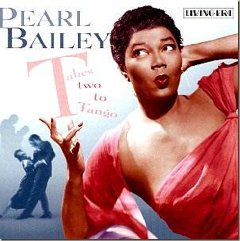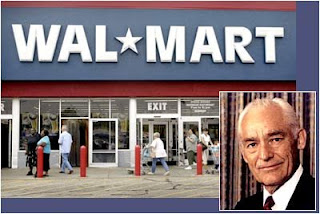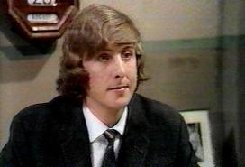North Dakota ( /dəˈkoʊtə/ ⓘ də-KOH-tə) is a landlocked U.S. state in the Upper Midwest, named after the indigenous Dakota Sioux. It is bordered by the Canadian provinces of Saskatchewan and Manitoba to the north and by the U.S. states of Minnesota to the east, South Dakota to the south, and Montana to the west. North Dakota is part of the Great Plains region, characterized by broad prairies, steppe, temperate savanna, badlands, and farmland. North Dakota is the 19th largest state, but with a population of less than 780,000, it is the 4th least populous and 4th most sparsely populated. The state capital is Bismarck while the most populous city is Fargo, which accounts for nearly a fifth of the state's population; both cities are among the fastest-growing in the U.S., although half of all residents live in rural areas.
State flag......
What is now North Dakota was inhabited for thousands of years by various Native American tribes, including the Mandan, Hidatsa, and Arikara along the Missouri River; the Ojibwe and Cree in the northeast; and several Sioux groups (the Assiniboine, Yankton, Wahpeton, and Teton) across the rest of the state. European explorers and traders first arrived in the early 18th century, mostly in pursuit of lucrative furs.
The United States acquired the region in the early 19th century, gradually settling it amid growing resistance by increasingly displaced natives. The Dakota Territory, established in 1861, became central to American pioneers, with the Homestead Act of 1862 precipitating significant population growth and development. The traditional fur trade declined in favor of farming, particularly of wheat. The subsequent Dakota Boom from 1878 to 1886 saw giant farms stretched across the rolling prairies, with the territory becoming a regional economic power. The Northern Pacific and Great Northern railway companies competed for access to lucrative grain centers; farmers banded together in political and socioeconomic alliances that were core to the broader Populist Movement of the Midwest. North and South Dakota were admitted to the Union on November 2, 1889, as the 39th and 40th states. President Benjamin Harrison shuffled the statehood papers before signing them so that no one could tell which became a state first; consequently, the two states are officially numbered in alphabetical order. Statehood marked the gradual winding-down of the pioneer period, with the state fully settled by around 1920. Subsequent decades saw a rise in radical agrarian movements and economic cooperatives, of which one legacy is the Bank of North Dakota, the only state-run bank in the U.S.
Beginning in the mid-20th century, North Dakota's rich natural resources became more critical to economic development; into the 21st century, oil extraction from the Bakken formation in the northwest has played a major role in the state's prosperity. Such development has led to unprecedented population growth (along with high birth rates) and reduced unemployment, with North Dakota having the second-lowest unemployment rate in the U.S., after Hawaii. It ranks relatively well in metrics such as infrastructure, quality of life, economic opportunity, and public safety. It is believed to host the geographic center of North America, Rugby, and is home to what was once the tallest artificial structure in the Western Hemisphere, the KVLY-TV mast.
History
Pre-colonial history
Native American people lived in what is now North Dakota for thousands of years before the arrival of Europeans. The known tribes included the Mandan people (from around the 11th century),[11] while the first Hidatsa group arrived a few hundred years later.[12] They both assembled in villages on tributaries of the Missouri River in what would become west-central North Dakota. Crow Indians traveled the plains from the west to visit and trade with the related Hidatsas after the split between them, probably in the 17th century.
Later came divisions of the Sioux: the Lakota, the Santee and the Yanktonai. The Assiniboine and the Plains Cree undertook southward journeys to the village Indians, either for trade or for war. The Shoshone Indians in present-day Wyoming and Montana may have carried out attacks on Indian enemies as far east as the Missouri. A group of Cheyennes lived in a village of earth lodges at the lower Sheyenne River (Biesterfeldt Site) for decades in the 18th century.
European exploration and colonization
The first European to reach the area was the French-Canadian trader Pierre Gaultier, sieur de La Vérendrye, who led an exploration and trading party to the Mandan villages in 1738 guided by Assiniboine Indians.
From 1762 to 1802, the region formed part of Spanish Louisiana.
Fort Union Trading Post National Historic SiteSettlement and statehood
European Americans settled in Dakota Territory only sparsely until the late 19th century, when railroads opened up the region. With the advantage of grants of land, they vigorously marketed their properties, extolling the region as ideal for agriculture.
Differences between the northern and southern part caused resentments between the settlers. The northern part was seen by the more populated southern part as somewhat disreputable, "too much controlled by the wild folks, cattle ranchers, fur traders" and too frequently the site of conflict with the indigenous population. The northern part was generally content with remaining a territory. However, following the territorial capital being moved from Yankton in the southern part to Bismarck, the southern part began to call for division. Finally, at the 1887 territorial election, the voters approved splitting the territory into two. The division was done by the seventh standard parallel.
State capitol .....
Congress passed an omnibus bill for statehood for North Dakota, South Dakota, Montana, and Washington, titled the Enabling Act of 1889, on February 22, 1889, during the administration of President Grover Cleveland. His successor, Benjamin Harrison, signed the proclamations formally admitting North Dakota and South Dakota to the Union on November 2, 1889.
If you want to read a whole lot more, go here: https://en.wikipedia.org/wiki/North_Dakota
- SERVES
- 3
- COOK TIME
- 10 Min
If you like crispy-fried onion strings, like the kind that are popular in restaurants, then you'll love this 5-ingredient recipe for easy, homemade, Onion Strings. They're simple to make, but the end results will leave you feeling like a restaurant chef. Whether you make them for tasty nibbling or as a main dish topper, these onion strings are always a hit! We consider them a simple yet fancy way to say ..."OHH IT'S SO GOOD!!"
- 1 cup all-purpose flour
- 1 1/2 teaspoon salt
- 1/2 teaspoon black pepper
- 1 cup vegetable oil
- 1 large onion, thinly sliced and separated into rings
- In a medium bowl, combine flour, salt, and pepper; mix well.
- In a large skillet, heat oil over medium-high heat. Place onion rings in flour, coat well, then carefully place in hot oil.
- Fry onions 6 to 8 minutes, or until golden. Drain on a paper towel-lined plate, and serve immediately.
HOW TO OBSERVE
- Thank a Vietnam Veteran.
- Buy them a drink or lunch.
- Visit a local memorial. Volunteer to help organize events.
- Support a veteran’s organization in your community. Volunteer and offer your skills.
- Watch a Vietnam War documentary such as The Vietnam War: A Film by Ken Burns and Lynn Novick or Last Days in Vietnam directed by Rory Kennedy or Vietnam Nurses by Timeline.
- Read about the Vietnam War in books like Vietnam – A History by Stanley Karnow or They Marched into Sunlight: War and Peace, Vietnam and America, October 1967 by David Maraniss or The Quiet American by Graham Green and Robert Stone.















